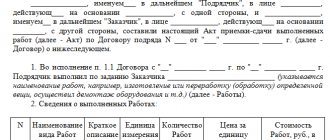Home / Real estate / Land / Provision
Back
Published: 12/23/2016
Reading time: 11 min
0
1073
Many citizens would like to receive a land plot forever, without setting a deadline, but a lot of questions arise - which lands can be allocated and under what conditions.
- Legislation
- Who is eligible?
- For what purposes are the plots provided?
- Procedure for provision
- When is refusal possible?
- Features of provision
Right to use land
As a general rule, the owner has the rights to own, use and dispose of his property (Clause 1, Article 209 of the Civil Code of the Russian Federation).
Possession, use and disposal of land and other natural resources, to the extent that their circulation is permitted by law (clause 3 of Article 129 of the Civil Code of the Russian Federation), are carried out by their owner freely, if this does not cause damage to the environment and does not violate rights and legitimate interests other persons (clause 3 of article 209 of the Civil Code of the Russian Federation).
Persons who own a land plot have the right to perform all actions with it that are not prohibited by law, namely: sell, donate, pledge, lease or otherwise dispose of it, unless the land is excluded from circulation or limited by law. in circulation (Part 1 of Article 260 of the Civil Code of the Russian Federation). The rights of the owner of a land plot are listed in Art. 40 Land Code of the Russian Federation.
Owners may have other restrictions on the use of land plots. Thus, the Law defines lands for special purposes, including agricultural lands, the use of which for other purposes is not permitted or limited. The use of a land plot classified as such land can be carried out only within the limits determined by its intended purpose (Part 2 of Article 260 of the Civil Code of the Russian Federation).
In addition to the owners, there are other users of land plots who own and use land plots on the right of permanent (perpetual) use, on the right of free use, lifelong inheritable ownership or lease.
A person who is not the owner of a land plot exercises his rights of ownership and use of the plot on the terms and within the limits established by law or an agreement with the owner (clause 2 of Article 264 of the Civil Code of the Russian Federation). The rights of such persons are provided for in Art. 41 Land Code of the Russian Federation.
You should also pay attention to the right to use a land plot by the owner of a building, structure or other real estate located on a land plot owned by another person. Such owners have the right to use the land plot provided by such person for this real estate.
When transferring ownership of real estate located on someone else's land plot to another person, he acquires the right to use the corresponding land plot on the same terms and to the same extent as the previous owner of the property (parts 1 and 2 of Article 271 of the Civil Code RF).
In addition, the owner of a building, structure, structure has the right to limited use of someone else's land plot (easement). As a rule, this is necessary for organizing passage, passage, construction, reconstruction and (or) operation of linear objects, as well as other needs of the owner of real estate, which cannot be provided without the establishment of an easement (Article 274 of the Civil Code of the Russian Federation, Article 23 of the Land Code of the Russian Federation ).
Drawing up a document
When drawing up and signing any documents, all regulatory requirements must be strictly observed. The contract form must have certain positions.
What clauses will the form of a typical contract for free use have?
| Requisites | It is necessary to indicate all information about the participants in the transaction, full name, address, contact information. |
| Subject of the agreement | The presence of this item is mandatory. Therefore, it is necessary to describe in detail the real estate that is transferred for use. It is necessary to describe in detail the state in which the property is located at a given time, and, if any, its individual characteristics. And also indicate its owner. |
| Responsibilities and rights of the parties to the transaction | The conditions under which the property is provided for rent are specified, as well as the circumstances under which the contract can be terminated early. In addition, the period of validity of the contract is indicated. |
| Property transfer process | It is necessary to specify the time period when and for how long the property will be transferred for free use. It would also be a good idea to additionally draw up an act of acceptance and transfer of property indicating the condition of the premises at the current time. |
| Bearing responsibility | If the terms of the contract are not met, the parties must be held accountable. If damage is caused, it is necessary to indicate the amount of fines and penalties, as well as how compensation for damage will occur. |
| Results | In summing up, it is required to indicate from what moment the agreement will come into force, as well as the circumstances for its termination. For what period is the contract concluded, and possible unforeseen circumstances must be indicated. |
Basically, when concluding such transactions, they use the basic options for drawing up a standard agreement.
The main need is to indicate information about the parties to the transaction, as well as about the property itself. But, of course, nothing prohibits participants from making their own adjustments to suit a specific situation. But no matter what adjustments are made, the data that must be included is mandatory:
- a detailed description of the property being transferred for loan;
- the responsibilities that both parties bear and their obligations;
- resolving conflict situations when they arise;
- if property is damaged, compensation options must be specified.
It is important to describe the property being transferred in very detail in order to avoid possible problems later. This is extremely relevant for those situations when not the entire property is put into use, but only part of it. The same rule applies to plots of land that are transferred into free ownership.
Of course, it is important to note in the document the fact of the presence of breakdowns in the premises received, if any.
Very often, the lender may indicate the transfer of authority to eliminate breakdowns by the tenant.
This is due to the fact that if any problems are discovered that were not noted in the document when it was drawn up, they may become the basis for the transaction to be terminated.
It is also worth noting that, according to current laws, which are prescribed in, an agreement can be drawn up for a certain time period, and can also be of unlimited duration. It is important to write this point down in the document.
Actual use of the land plot
Neither the Civil nor the Land Codes of the Russian Federation provide for a legal definition of such a concept as “actual use of a land plot.”
The actual use of the land plot is mentioned only in paragraph 4 of Art. 3 of the Federal Law of October 25, 2001 N 137-FZ “On the implementation of the Land Code of the Russian Federation”, according to which a citizen of the Russian Federation has the right to acquire free ownership of a land plot that is in his actual use, if a residential building is located on such a land plot , the ownership of which arose with the citizen before the day of entry into force of the Land Code of the Russian Federation (i.e. before October 21, 2001) or after the day of its entry into force, provided that the ownership of the residential building passed to the citizen by inheritance and the testator's ownership of the residential building arose before the date of entry into force of the Land Code of the Russian Federation.
It should also be noted that the actual use of a land plot is also important for the acquisition of this plot of property, if a citizen who is not the owner of the plot, but who conscientiously, openly and continuously owns it as his own for fifteen years, acquires ownership of it by virtue of acquisitive prescription (Article 234 of the Civil Code of the Russian Federation).
Thus, the right to actual use of a land plot has legal significance for registration of ownership of a land plot, subject to the ownership of real estate located on this plot and owned before the entry into force of the Land Code of the Russian Federation, or open and actual ownership of the plot for fifteen years .
Early dissolution
An agreement for the gratuitous use of real estate may be terminated before the expiration of its validity period by the lender in cases where the recipient:
- Operates the facility in violation of the terms of the transaction or for purposes other than its intended purpose.
- Fails to fulfill obligations to preserve material assets in proper condition or maintain them.
- Transferred the property to a third party without the consent of the lender.
- Significantly worsens the condition of material assets.
The recipient may terminate the agreement early if:
- Defects in the object were discovered, as a result of which its normal operation is impossible or burdensome, provided that he did not know and could not know about them when the agreement for the gratuitous use of the property was concluded.
- Due to circumstances for which he is not responsible, the thing turned out to be in a condition unsuitable for use.
- The lender did not warn about the rights of third parties to the property when drawing up the agreement.
- The entity from whom the thing was received did not fulfill the obligation to provide it, accessories or documents related to it.
Provision of land plots
The norms of the Land Code of the Russian Federation provide for several options for the provision of land plots from lands that are in state or municipal ownership.
Such land plots can be provided on the basis of:
- decisions of a state authority or local government in the case of granting ownership of a land plot free of charge or for permanent (indefinite) use;
- purchase and sale agreement in case of provision of ownership of a land plot for a fee;
- lease agreement in case of provision of a land plot for rent;
- agreement for gratuitous use in case of provision of a land plot for gratuitous use.
The provision of land plots in state or municipal ownership is carried out by the executive body of state power or local government within the limits of their competence in accordance with Art. Art. 9 - 11 of the Land Code of the Russian Federation (Article 39.2 of the Land Code of the Russian Federation) and in the manner established by Art. Art. 39.2 - 39.20 Land Code of the Russian Federation.
The very procedure for the provision of land plots directly depends on the right under which the given plot is provided (provision of ownership for a fee, free of charge, provision for rent, gratuitous use, etc.), and therefore each form of provision of a land plot has its own characteristics.
Responsibility
The lender is responsible for defects in the property that, due to gross negligence or intent, he did not specify during the execution of the agreement. For shortcomings that the subject to whom the material assets are being provided did not know about, or that he knew about, but he pointed out to them when making the transaction, or that should have been identified by the recipient during inspection or verification, he is not responsible.
There is another important rule, according to which the free use of property is carried out. Temporarily operated facilities may affect the interests of third parties. The lender is responsible for damage caused by a third party when using the item, unless he can prove that the damage arose as a result of gross negligence or intent of the recipient or the person in whose possession the item ended up with the latter’s consent. Other entities may have rights to property provided for free use. The execution of an appropriate agreement does not deprive these entities of their existing legal opportunities.
Limit sizes of land plots
Limit sizes of land plots (maximum and minimum) are established by several legal acts. So, paragraph 1 of Art. 11.9 of the Land Code of the Russian Federation establishes that the maximum sizes of land plots in respect of which, in accordance with the legislation on urban planning activities, urban planning regulations are established, are determined by such urban planning regulations (clause 2, part 6, article 30 and article 38 of the Civil Code of the Russian Federation).
The maximum size of agricultural land plots is discussed in Art. 4 Federal Law dated July 24, 2002 N 101-FZ “On the turnover of agricultural land.” This article states that the minimum sizes of new land plots formed from agricultural lands can be established by the laws of the constituent entities of the Russian Federation in accordance with the requirements of land legislation.
Thus, the establishment of maximum sizes of land plots for agricultural needs falls within the competence of the constituent entities of the Russian Federation and is regulated by regional legislation.
However, federal legislation establishes a limitation according to which the maximum size of the total area of agricultural land, which is located on the territory of one municipal district and can be owned by one citizen and (or) one legal entity, is established by the law of a subject of the Russian Federation equal to no less than 10 percent of the total area of agricultural land. lands located on the specified territory at the time of provision and (or) acquisition of such land plots (Part 2 of Article 4 of the Federal Law “On the turnover of agricultural land”).
Limits on the size of land plots provided for private farming have also been established. Similar standards are established by local government bodies (Part 4, Article 4 of the Federal Law dated 07/07/2003 N 112-FZ “On personal subsidiary plots”).
At the same time, it has been established that the maximum size of the total area of land plots that can be simultaneously owned and (or) otherwise owned by citizens conducting private farming is set at 0.5 hectares. The maximum size of the total area of land plots can be increased by the law of the subject of the Russian Federation, but no more than five times, which, however, does not apply to the Far Eastern Federal District (Part 5, Article 4 of the Federal Law of 07.07.2003 N 112-FZ “On personal subsidiary plots” ").
Taxation
In paragraph 8 of Art. 250 of the Tax Code establishes that property acquired free of charge is classified as non-operating expenses. Explanations on this matter were given by the Presidium of the Supreme Arbitration Court in Information Letter No. 98 dated December 22, 2005. It states that an enterprise, by exploiting someone else’s facility, receives property rights. Therefore, there is a benefit. Income received from the use of property acquired under a free use agreement must be taken into account when calculating income tax. The costs of maintaining the facility can be included in expenses when calculating the amount of mandatory payment to the budget. In this case, certain conditions must be met:
- The activities of an enterprise in the use of material assets should be focused on making a profit.
- Costs must correspond to the characteristics defined in Art. 252 NK.
Determining the procedure for using a land plot
According to the general rule established in Art. 247 of the Civil Code of the Russian Federation, ownership and use of property in shared ownership is carried out by agreement of all its participants, and if agreement is not reached, in the manner established by the court.
This rule also applies to land plots.
Thus, if a land plot is owned by several owners, then the use of such a plot should be carried out by agreement between them. And only in the absence of a general agreement between the co-owners or if there is a dispute between them, it is necessary to establish the procedure for using the land plot in court.
It should be noted that even with a judicial determination of the procedure for using a land plot and determining which part of the plot and in what size is transferred for use to one or another co-owner, the plot itself remains unchanged and indivisible and it retains the same and only cadastral number.
If the land plot belongs to persons on the right of ownership, then the only criterion that the court will be guided by is the size of the shares in the ownership of the land plot. In this case, the procedure for use established by the court is not subject to state registration.
Thus, in order to determine the procedure for using a land plot (in the absence of a voluntary agreement between co-owners), it is necessary to prepare and submit to the court at the location of the land plot a statement of claim to determine the procedure for using the plot, the defendants for which will be other owners.
The amount of state duty for this claim will be 300 rubles (clause 3, part 1, article 333.19 of the Tax Code of the Russian Federation).
The statement of claim should indicate that the plaintiff is a co-owner of the land plot, but in the absence of a voluntary agreement with other co-owners, he is not able to use his part of the land plot or his rights are violated. Also in the statement of claim you should ask to allocate a specific part of the land plot for use.
In addition to the method of determining the procedure for using a land plot indicated above, there is another method associated with the transfer of ownership of a building or structure to several owners. In this case, the procedure for using the land plot is determined taking into account the shares in the ownership of a building, structure or the established procedure for using the land plot (Part 1 of Article 35 of the Land Code of the Russian Federation).
In any case, if there are disputes about the procedure for using a land plot, you should file a claim in court.
Change and termination of the free use agreement
Any ongoing legal relationship can be changed or terminated in cases established by law. In this context, relations regarding the gratuitous use of someone else's property are subject to general rules with some reservations. The general procedure for making amendments and terminating contracts is reflected in Chapter 29 of the Civil Code.
Any changes to the terms of the contract are permitted with mutual consent of the parties. Regarding the agreement for gratuitous use, a change in the party to the agreement acting as the lender is also provided. This is possible in the following cases:
- sale, donation or other alienation, as well as when renting out for paid use the property that is the subject of the agreement. The powers of the lender are transferred to the new owner or user;
- death of the lender. The heir of the deceased becomes a party to the contract;
- reorganization of the lending organization. Her legal successor will act as the new lender.
Any changes to the agreement are formalized by an additional agreement of the parties
Termination of the contract occurs in one of the following circumstances:
- upon the death of the individual who accepted the thing for use;
- upon liquidation of the borrower company.









